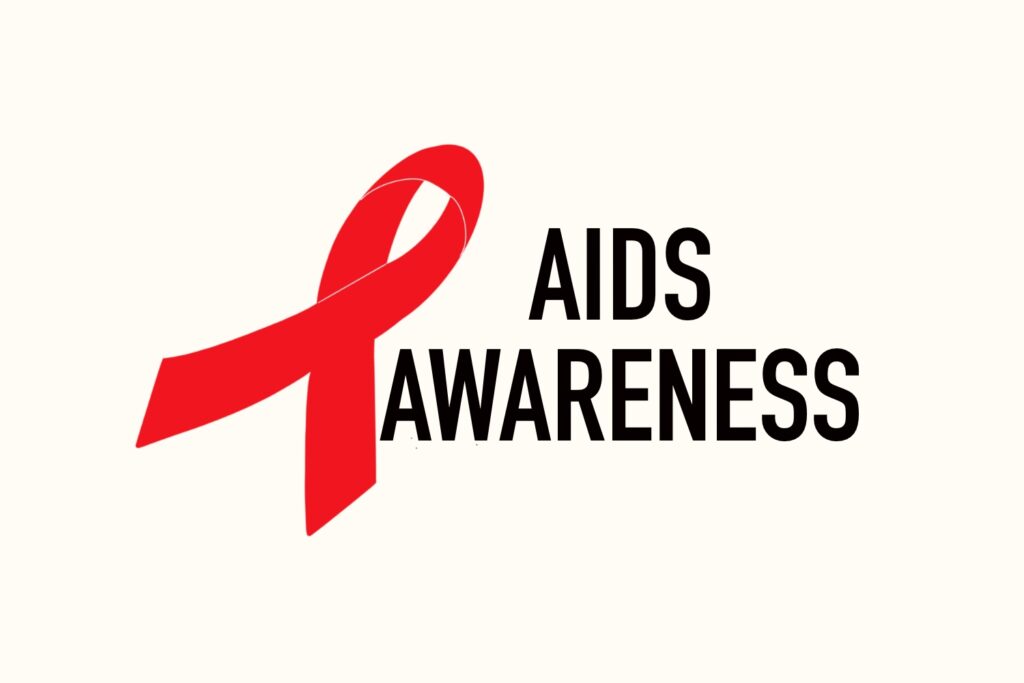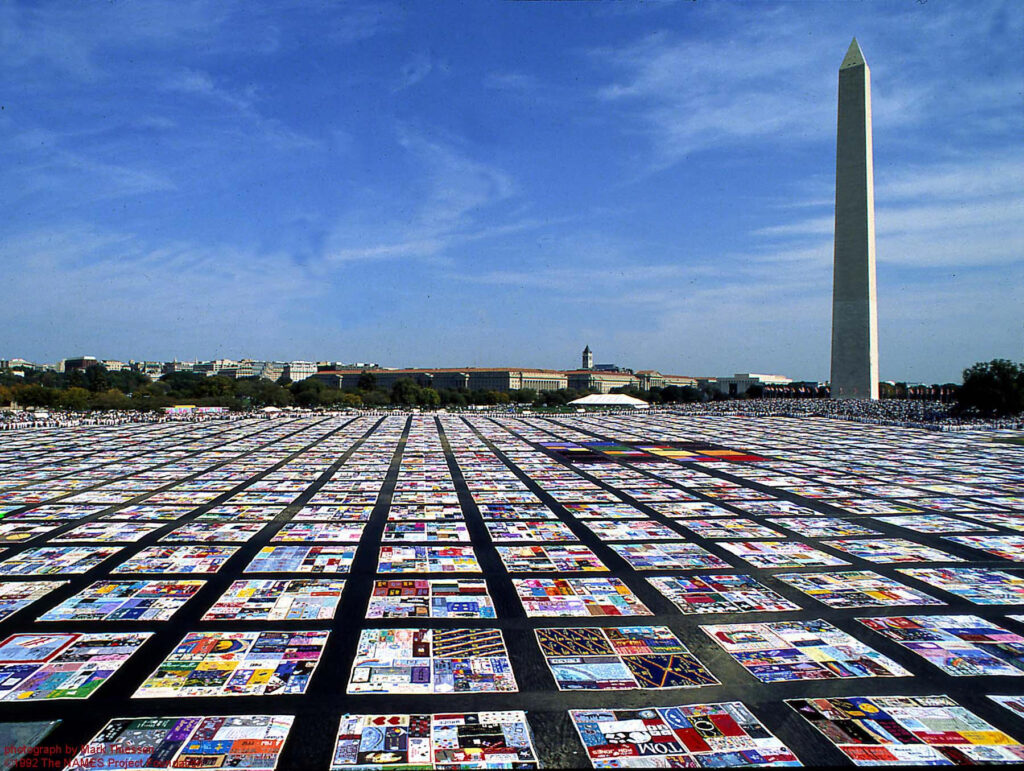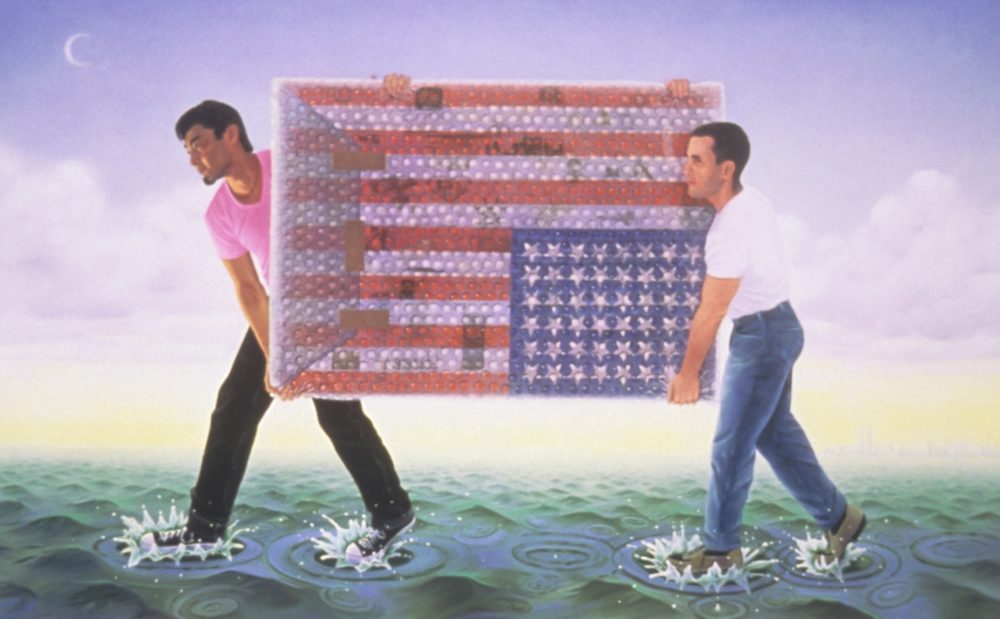John Navarria
AIDS Awareness is an event that raises awareness towards AIDS/HIV every year on April 10th. My goal is to spread more awareness by emphasizing projects made by thousands of people ranging from the AIDS memorial quilt, paintings, to online galleries dedicated to archiving artwork.

AIDS created a lot of stigma and discrimination towards LGBTQ people. Some believed that only certain individuals could get HIV and those who got it deserved it for being gay. These rumors kicked off in San Francisco during the 1980s. The first articles about the virus published by the CDC talked about how 5 previously healthy, young gay men had got it and unfortunately lost their lives to it. As a result of the article US gay rights movements were severely frowned upon. People began to become less comfortable around gay men specifically. Even the government at the time was devoted to funding resources for gay movements. With a new virus and increased amounts of tension between the LGBTQ community, something had to be done.
In this section, I’m going to be talking about the AIDS Memorial Quilt. We learned briefly about this topic in class but there is still a lot more to know. The project was started by Cleve Jones, a social activist, who dedicates his time to spreading positivity through artwork. Jones was born in West Lafayette, Indiana on October 11th, 1954. Jones first got into social rights movements when he was “adopted” by gay rights leader Harvey Milk. Jones had worked for Harvey Milk as an intern until he was assassinated in 1978. It was not until 1983 that Jones founded the AIDS Memorial Quilt. The idea of the quilt came to him during the candlelight march in remembrance of Harvey Milk and former Mayor George Moscone. At the march, people were writing names of those they lost to AIDS/HIV on signs. These signs were attached to the San Francisco Federal Building. Jones used what he saw that day as an inspiration.

The AIDS Memorial Quilt made its first appearance at the national mall in Washington DC on October 11th, 1987, at the same time as the National March for Lesbian and Gay Rights. At the time, the quilt had over 1900 panels and was the size of a football field! The first showing of the quilt lead to every name being read at all the future displays. Over 500,000 people had visited the quilt during its first showing. The textile art was so popular that the quilt toured over 20 cities. Over 9,000 volunteers helped the quilt be displayed across the country. Every city that was toured just made the quilt bigger and bigger. Towards the end of the first tour, the quilt was just over 6,000 separate panels. In November 1989 the quilt made its last stop at the National AIDS Memorial where it still resides In San Francisco. The project itself was made to stop the hate and social misconduct towards people affected by the virus. The quilt inspired so many more projects on over 5 different continents. As of recently a new project called “Call My Name” was started to remember black lives lost to AIDS. This project as well as the AIDS Memorial quilt can now be toured online in its website exhibit!

Another artist I will be talking about is Frank C. Moore. A lot of Moore’s artworks were focused on civil rights and environmental problems. What you may not know is that Moore himself was diagnosed with HIV in 1985. Following his diagnosis, Moore began creating artwork pursuing AIDS awareness and homosexuality. Later in 1988, Moore became a founding member of the program called “Visual AIDS” a project that utilizes art to fight against AIDS by preserving art and spreading awareness. The program continues to raise awareness to date. Shown below are some of Moore’s art as well as art from the Visual AIDS web gallery.



Although AIDS Awareness has influenced millions of people to actively work together and spread awareness through paintings, textile artwork, and online art galleries, we still do not have a proper vaccine for the virus. A ton of my intention and motivation to write about this issue came from the AIDS memorial quilt. This shows how much artwork can bring social issues to light. I have faith that in the upcoming years with the increasing numbers of the LGBTQ community that we can finally put a stop to the discrimination and hate caused by the virus.
Sources:
https://www.clevejones.com/ – Founder of the AIDS Memorial Quilt.
https://www.aidsmemorial.org/quilt-history – History of the quilt.
https://www.aidsmemorial.org/virtual-quilt/virtual-quilt-black-history – Call My Name Movement.
https://visualaids.org/
https://www.davidzwirner.com/exhibitions/2021/more-life/frank-moore

